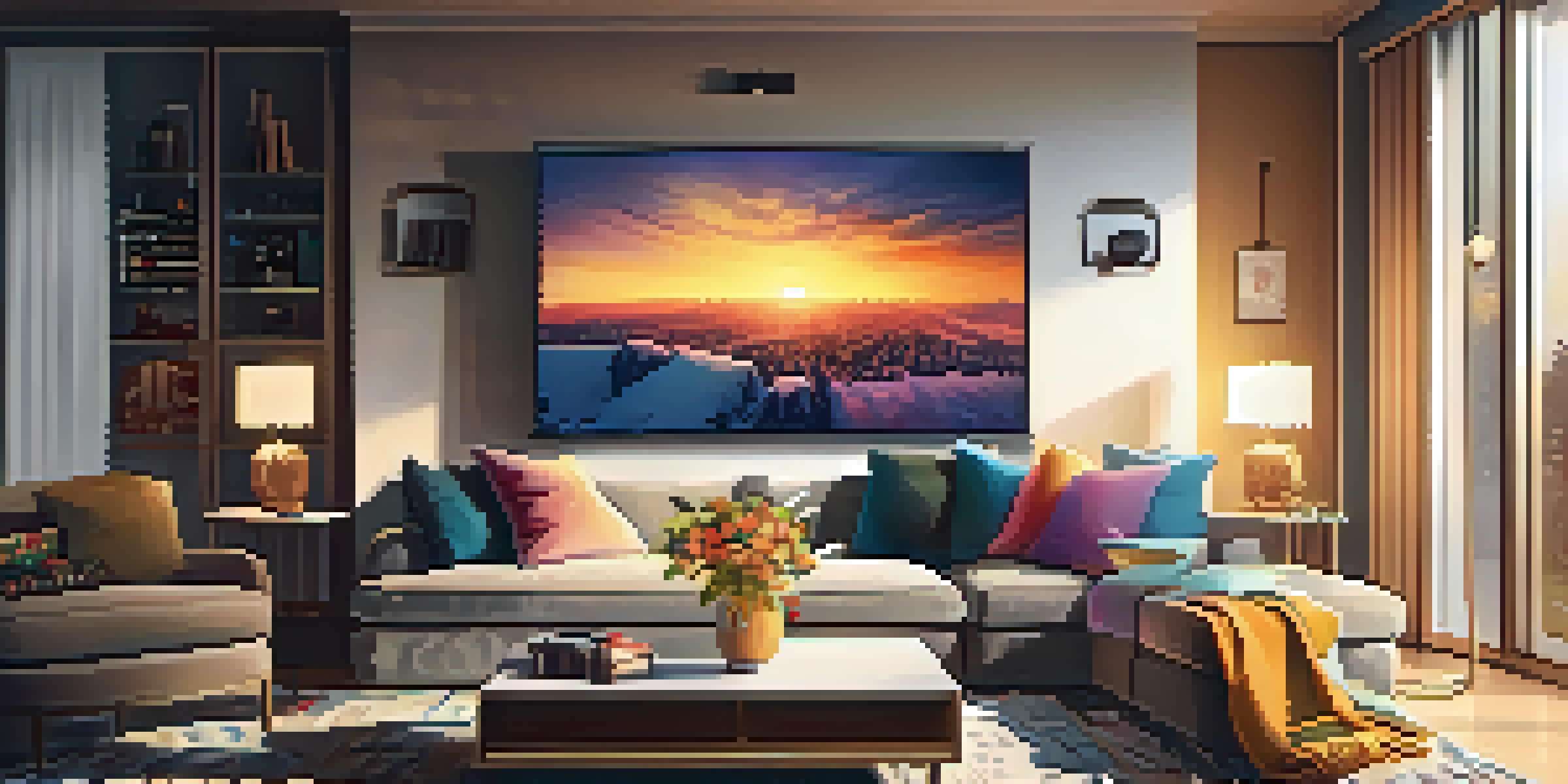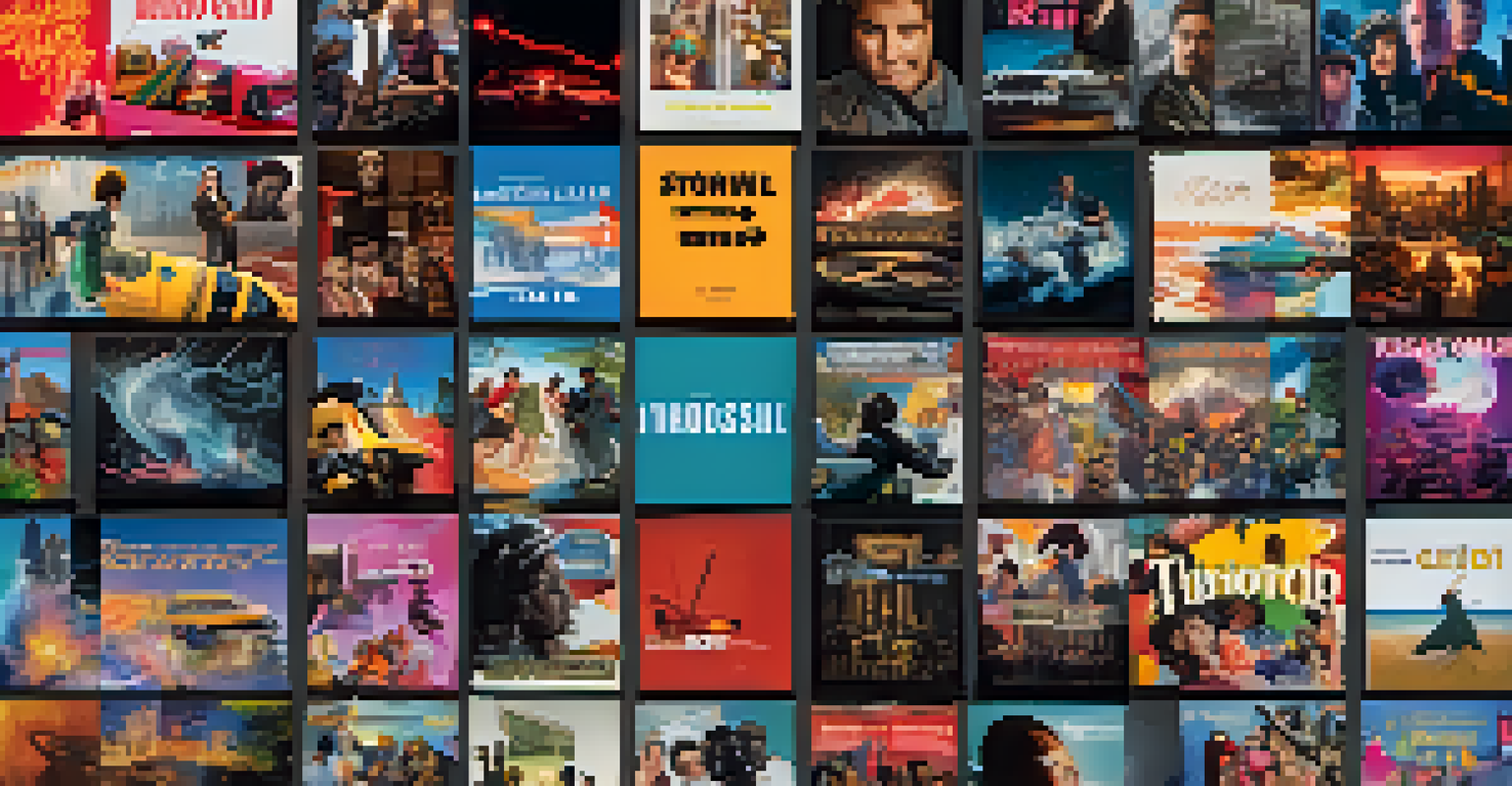Changing Viewer Behaviors: The Shift to On-Demand Content

The Rise of On-Demand Content in Today's Media Landscape
In recent years, on-demand content has surged in popularity, reshaping how we consume media. Viewers are no longer tied to traditional broadcast schedules, allowing them to watch what they want, when they want. This shift has been driven by the proliferation of streaming services like Netflix and Hulu, making it easier than ever to access a vast library of shows and movies at the click of a button.
The future of television is on-demand, and the viewer is in control.
The convenience of on-demand content appeals to our increasingly busy lives, where time is of the essence. Whether it's binge-watching a favorite series or catching up on missed episodes, the flexibility of on-demand viewing has transformed our viewing habits. This evolution reflects a broader cultural change towards instant gratification and personalized experiences.
As a result, traditional cable TV is facing tough competition, with many viewers opting for streaming options that cater to their preferences. This shift has prompted media companies to rethink their strategies and invest more in on-demand offerings to keep their audiences engaged.
Why Viewers Prefer On-Demand Over Live Programming
One of the primary reasons viewers are gravitating toward on-demand content is the power of choice. Unlike live programming, which requires viewers to adjust their schedules, on-demand platforms allow for a tailored viewing experience. This freedom means that if you’re a night owl or a busy parent, you can fit your viewing around your life, not the other way around.

Additionally, the ability to pause, rewind, or fast-forward content enhances the viewer experience. Imagine watching a thrilling scene and needing to answer a call; with on-demand, you can easily hit pause without missing a beat. This level of control is a game-changer compared to the rigidity of traditional TV.
On-Demand Content's Popularity Surge
The rise of streaming services has shifted viewer habits, allowing for greater flexibility and convenience in media consumption.
Moreover, on-demand content often includes diverse options that cater to various tastes. From niche documentaries to international films, viewers can explore genres and styles that may not have been available on traditional networks. This variety keeps audiences engaged and coming back for more.
The Impact of Technology on Viewer Habits
Technology plays a pivotal role in the shift to on-demand content, with smart devices making it easier to access media anywhere. With smartphones, tablets, and smart TVs, viewers can watch their favorite shows on the go or in the comfort of their homes. This accessibility has created a culture where media consumption happens at any time and place.
Binge-watching is a new way of consuming stories, allowing viewers to experience the narrative in a way that feels more immersive.
Moreover, advancements in internet speed and streaming quality have played a crucial role. High-definition and 4K streaming options enhance the viewing experience significantly, making on-demand content more appealing. Viewers are now accustomed to high-quality visuals and seamless playback, raising their expectations for all media.
Social media also influences viewer habits, as platforms like Instagram and TikTok shape trends and drive audiences to specific shows or movies. As viewers share their content experiences, they create a community that celebrates on-demand viewing, further solidifying its place in modern entertainment.
Binge-Watching: A Cultural Phenomenon
Binge-watching has become a cultural phenomenon, thanks to the on-demand model. This term refers to the practice of watching multiple episodes of a series in one sitting, and it has transformed how we engage with storytelling. Instead of waiting a week for the next episode, viewers can dive deep into a narrative, experiencing it all at once.
This behavior is not just a trend but a way for viewers to connect more profoundly with characters and plots. By immersing themselves in a series, viewers develop emotional ties that enhance their overall experience. It’s like reading a gripping book where you can’t wait to turn the page.
Binge-Watching's Cultural Impact
Binge-watching transforms storytelling engagement, enabling viewers to connect more deeply with characters and narratives.
However, binge-watching can be a double-edged sword. While it offers satisfaction and thrill, it can also lead to the dreaded ‘TV hangover’ where viewers feel drained after consuming an entire season in one night. This speaks to the allure and challenge of on-demand viewing in our fast-paced lives.
The Role of Original Content in Viewer Engagement
Original content has become the lifeblood of many streaming platforms, serving as a major draw for viewers. Exclusive shows and movies create a unique selling point, encouraging audiences to subscribe and stay loyal to a service. For instance, Netflix's 'Stranger Things' captivated millions, showcasing the power of original storytelling.
These exclusive offerings not only attract new subscribers but also foster community discussions and fan engagement. When people are invested in a show, they share their thoughts and theories across social media, creating a buzz that further entices others to join in. It’s a modern-day water cooler moment — but online.
Moreover, original content allows platforms to differentiate themselves in a crowded market. With so many choices available, unique programming can set one service apart from another, making it essential for success in the competitive streaming landscape.
How On-Demand Content Shapes Viewing Expectations
The rise of on-demand content has fundamentally altered viewer expectations regarding accessibility and quality. Audiences now anticipate that they can access their favorite programs anytime, without delays or interruptions. This shift has led to a demand for more flexible viewing options across all platforms.
Additionally, viewers expect high production values and compelling storytelling. As they become accustomed to high-quality content from streaming giants, their standards for all media increase. This places pressure on traditional networks to elevate their offerings to meet the evolving tastes of modern audiences.
Future of Personalized Viewing
Emerging technologies and AI-driven recommendations promise to enhance on-demand content experiences, tailoring suggestions to viewer preferences.
As a result, we are witnessing more innovative formats and genres emerging in response to audience demand. From interactive storytelling to short-form series, the landscape of content creation is being reshaped by viewer preferences, pushing creators to think outside the box.
Future Trends in On-Demand Content Consumption
Looking ahead, the future of on-demand content consumption is likely to continue evolving with technological advancements. Emerging technologies like virtual reality (VR) and augmented reality (AR) could transform how viewers engage with content, offering immersive experiences that traditional media can't replicate. Imagine stepping into your favorite show or movie — it’s an exciting prospect!
Furthermore, the integration of artificial intelligence (AI) in content recommendations will enhance personalization. As platforms analyze viewer preferences and habits, they can suggest tailored content that resonates with individual tastes. This will make finding new shows easier, keeping audiences engaged and satisfied.

Finally, as the competition among streaming services intensifies, we might see more collaborative efforts and content sharing. This could lead to innovative partnerships that provide viewers with even more diverse and high-quality programming, ensuring that the on-demand experience remains exciting and fresh.